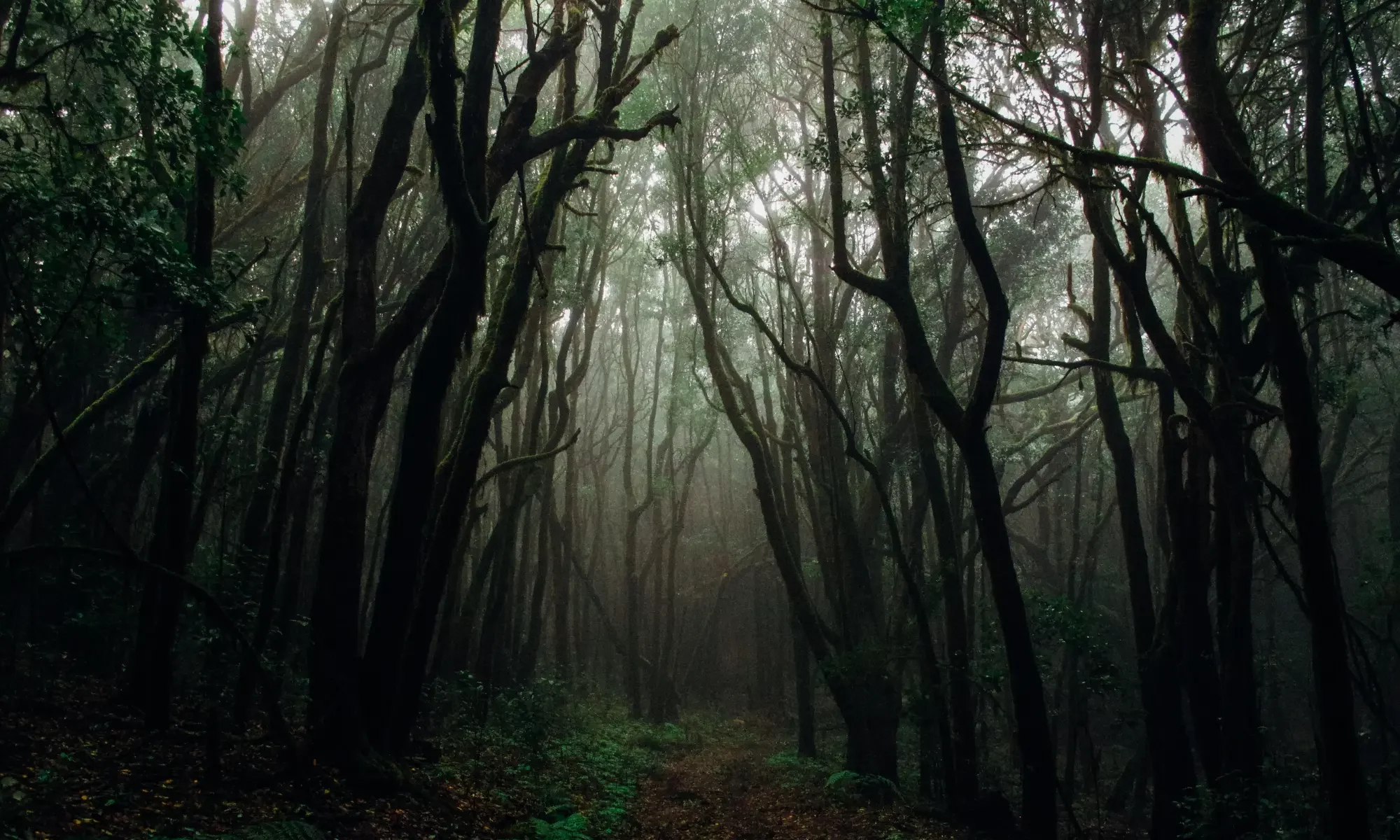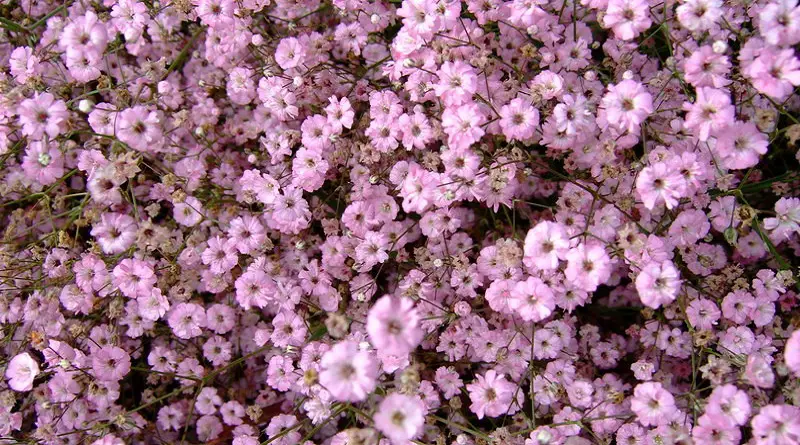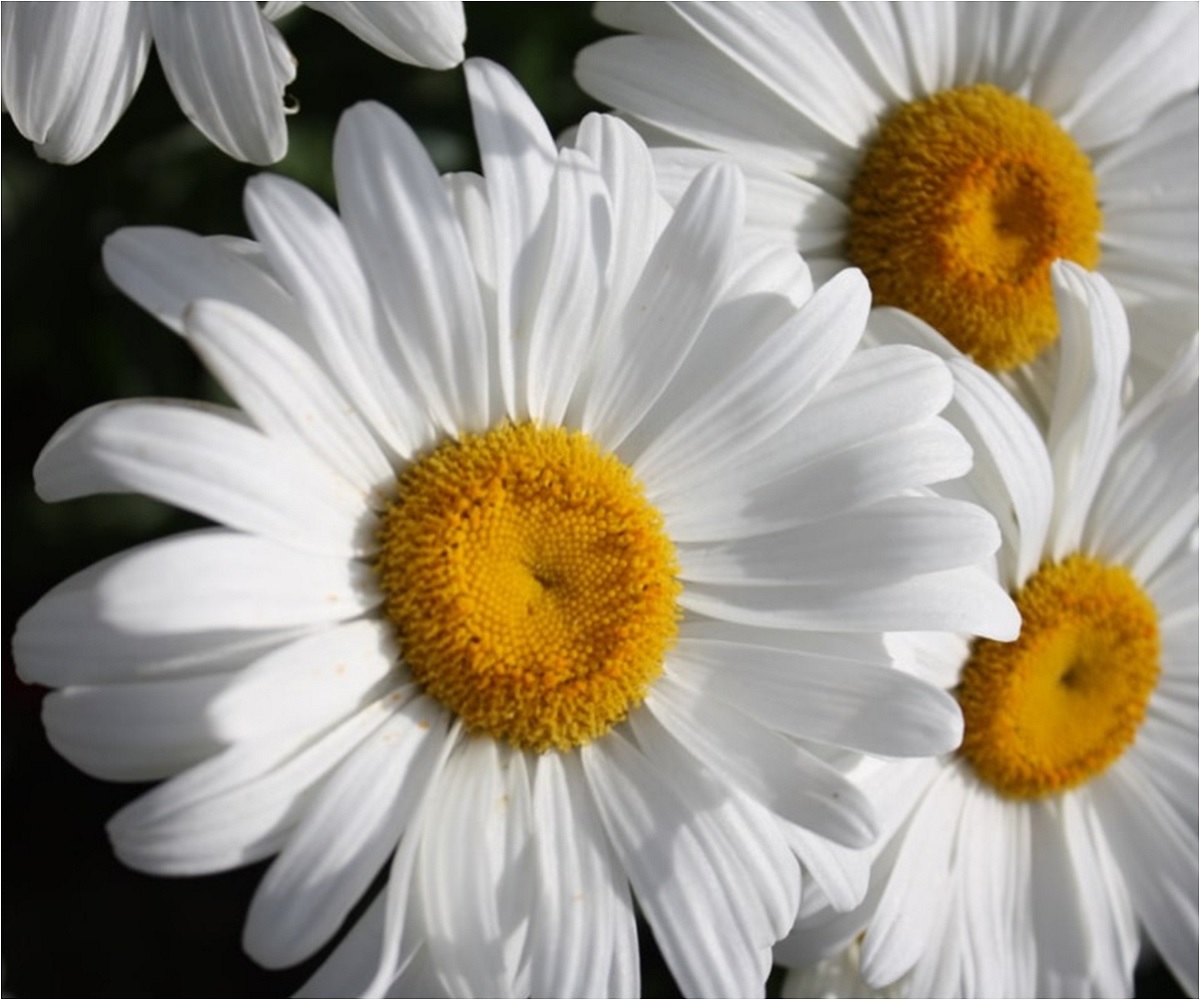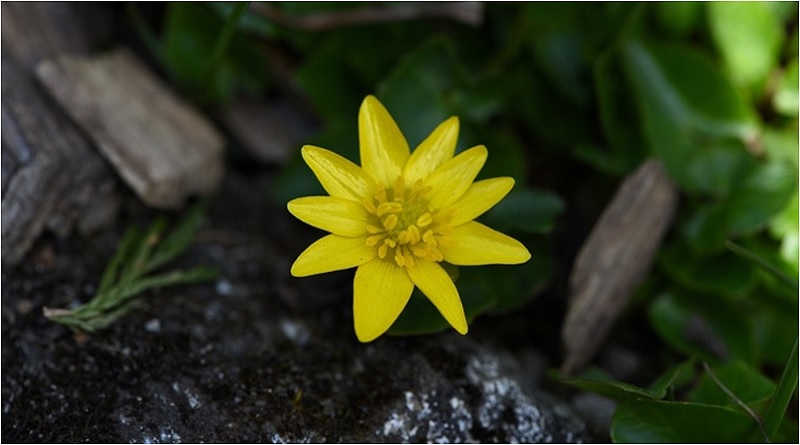The Magic of Pink Baby’s Breath Flowers

Pink Baby’s Breath flower’s magic resides in its graceful feminine energy and its ability to empower the nurturing side of our soul. The flower’s presence is almost heavenly – a soft and gentle pink hue that entices the vision and satisfies the spirit. It thaws the bitterness in our hearts just a little bit and reminds us of the power and joy in compassion’s warm glow.
There are times that the world can seem cold and unfeeling. For instance, a cordial smile, a tender touch, even an affectionate hug are things we rarely experience. As a result, the distance between us grows, and closeness is becoming a thing of the past.
We need to grow in compassion and empathy to bridge the gap. We should be able to look at the delicate, soothing beauty of Pink Baby’s Breath flowers and be inspired to love, not fearing our emotions. Love, empathy, kindness doesn’t make us weak. These things connect us to others, which makes us stronger.
Pink Baby’s Breath reminds us of the importance of reclaiming our feminine energy. We have categorized ourselves into overly rigid lines of masculinity and femininity. The truth is, we are comprised of all facets – female, male, and the in-between. Therefore, we should embrace it all.
It is the magic of the feminine that we need to bring us closer to each other. There is strength in tenderness, and there is power in vulnerability. Allow Pink Baby’s Breath’s beauty to resonate with the side of you that makes you beautiful – the goodness of the Goddess within us all.
Pink Baby’s Breath Correspondences
- Botanical Name: Gypsophila
- Folk Names: Babe’s Breath, Gyp, Soapwort, Maiden’s Breath
- Element: Water
- Planet: Venus
- Magical Attributes: Protection, Love
Pink Baby’s Breath Spiritual Meaning
There is more to Pink Baby’s Breath flower’s color than just the elegant rosy blush. It almost seems to glow against the din as if empowered by a light from within. Its pigmentation is diaphanous and otherworldly.
The ethereal, mystical glow of the Pink Baby’s Breath flower reminds us that there is something beyond our material realm. There is a world of Spirit, just beyond our gaze, that illuminates the visible world and graces Pink Baby’s Breath with a supernal, transcendent beauty.
While Baby’s Breath flowers share a significant association with spirituality in general, Pink Baby’s Breath takes that relationship further. The color pink is a medley of red, the color of passion and action, and white, a shade we associate with purity and the empyreal.
Working in tandem, they create the color pink and convey the lesson that our spirituality is best expressed through action. Furthermore, action means showing compassion to others, nurturing the seeds of the future, and loving unconditionally.
Allow the roseate hue of Pink Baby’s Breath’s flowers to remind you to ground your spirituality through your actions. Spirituality without work is inert. It needs expression through your deeds and effort to effect real change.
A Flower with Feminine Power

Pink Baby’s Breath flowers are uniquely feminine in their essence. Since the 1940s, the color pink has been inextricably linked with the feminine. It is now customary in the modern-day to assume pink is a color for girls. Conversely, blue as a masculine color has received the same treatment.
This is evidence that gender roles and traditions are a fluid concept. While pink might be a color we associate with femininity now, it hasn’t always been. Furthermore, things that we attribute to masculine personalities might become more feminized tomorrow. So it’s important not to get trapped in the notion that pink things – like pink baby’s breath flowers – are “girly.”
We house both feminine and masculine energy. This explains why men can be nurturing and women can be strong. A mother can share the same drive to protect and fight for her family as a father does. Likewise, both men and women can employ the power of a gentle touch. We contain aspects of both dualities and all the shades in between, and that’s what makes us whole.
Allow the glow of Pink Baby’s Breath flowers to inspires you to express and utilize your more feminine side. The Feminine aspect is a power to be tapped into. It is the key to understanding the mystery of love and compassion. It is sagely and patient, intuitive and graceful. And it is within us all.
What Pink Baby’s Breath Teaches Us About Love
Pink Baby’s Breath flowers represent the softer, sweeter side of love. That blush of champagne pink is akin to the pink that flushes the faces of young lovers experiencing the high of a brand-new romance. It is an innocent kind of love that makes you giddy and warms you up from the inside.
This kind of love also extends to the tenderness you feel for a newborn child. There’s a certain purity in a new life that you cannot find anywhere else. An infant is without guile or deception. Their intentions and desires are sinless and straightforward. Food. Warmth. Love. It is this simplicity that makes it easy to extend limitless love to an innocent babe.
But also, Pink Baby’s Breath flowers want us to understand the importance of unconditional love. The color pink incorporates both red, the color of passion, and white, a shade that evokes piety and purity. The lesson therein is that we should express our love without boundaries, as our spirit was designed to do.
The love we volunteer so effortlessly for a newborn child or that flows without prompting someone we have romantic feelings should also flow just as easily for others. Just as Pink Baby’s Breath flowers abundantly effuse a sweet and pleasant aura, we should also be generous in the sweetness, kindness, and joy we are willing to share with those around us.
Baby Showers and Pink Baby’s Breath Flowers
Pink Baby’s Breath is a popular staple in baby showers for those expecting a girl. This is because it shares a symbolic association with all things baby – as the name would imply. Not to mention, we’re conditioned to associate the color pink with girls. Hence, the color pink and baby’s breath flowers make the perfect coupling to celebrate the birth of a girl.
The two most popular colors of Baby’s Breath flowers, besides white, are pink and blue. Pink Baby’s Breath flowers are a way to color the festivities with a feminine air in honor of the soon-to-be-born baby girl. In addition, they are also coupled in floral bouquets for the expecting parents as a meaningful gift. Conversely, Blue Baby’s Breath finds much use in showers celebrating the birth of a boy.
It’s important to note that there is a modern trend moving away from designating the gender of a child before the child themselves has assumed their own. As a result, you may want to consider the intentions of the parents before gifting them with Pink Baby’s Breath flowers as to not make the assumption for them. Fortunately, there are many other, gender-neutral colors of Baby’s Breath flowers, like yellow and orange.
Pink Baby’s Breath Flowers Attracts Fairies
Fairies can be a naughty bunch. They don’t necessarily play by the rules of “good and evil.” Some fairies do delightful things like help keep your plants healthy. On the other hand, there are fairies who, unfortunately, like to eat children.
Luring fairies to your garden should be a task you choose prudently. Fairies like to bring a little mischief with them. If you aren’t looking to attract that kind of energy into your life, you will want to plant your Pink Baby’s Breath near some iron. Hanging a horseshoe nearby can help ward them away, as they don’t like iron.
However, if you seek to attract beneficial fairies to your garden, Pink Baby’s Breath flowers are a perfect choice. The pacifying pink color will do its part to make sure harmful fairies stay away.
You may want to provide little offerings for the “good” fairies that visit your garden. For example, they tend to love bread, butter, and milk. Moreover, be sure never to thank them as fairies don’t like to be thanked.
A Flower for Caretakers and Those Who Care
The Pink Baby’s Breath flower is emblematic of caretaker energy – an energy that is compassionate, understanding, and empathetic. It is caretakers that make the world go round. They take care of our children with patience and tenderness. Furthermore, they watch over us when we’re ill and infirm, their optimism helping us find our way to the bright side of health.
We are all caretakers. You might be a nurse or doctor who helps nurse the body back to health. Or even a mother, father, grandmother, or grandfather who raise the young and nurture their souls. And let’s not forget the teachers, daycare workers, and nannies who watch over and protect innocent souls from harm. Or perhaps you are simply a loving, attentive friend who helps those in your circle keep motivated, uplifted, and looked after.
In the soft blush of its pink hue, Pink Baby’s Breath enables us to tap into our caretaker side. Our caretaker side is our nurturing, tender side. It is the part of us that demonstrates unconditional love through our actions and how we take care of those in need. And the fact of the matter is we need our caretakers — everyone we can get. We need more of those who give of themselves, and less who take.
Pink Baby’s Breath flowers are a wonderful way to show your appreciation for the caretakers in your life. It might be the neighbor, who looks after your plants while you’re away. Or your mother, who provides you wholesome, soul-filling meals every time you visit her. Or maybe your child’s teacher, who makes sure your child is protected and nurtured in your absence. Whomever it may be, take the time to show them your appreciation with Pink Baby’s Breath flowers. They deserve it.
Related: Magical Flowers
The Soft, Quiet Power of Baby’s Breath Flowers

How Lilac Flowers Attract Love and Repel Negativity
The Intimate Connection Between Daffodils and Ostara

Using Jasmine Flowers to Attract Your Soulmate
*FDA Disclaimer
The contents of this website are for informational purposes only and do not render medical or psychological advice, opinion, diagnosis, or treatment. The information provided through this website should not be used for diagnosing or treating a health problem or disease. It is not a substitute for professional care. If you have or suspect you may have a medical or psychological problem, you should consult your appropriate health care provider. Never disregard professional medical advice or delay in seeking it because of something you have read on this website. Links on this website are provided only as an informational resource, and it should not be implied that we recommend, endorse or approve of any of the content at the linked sites, nor are we responsible for their availability, accuracy, or content.


































